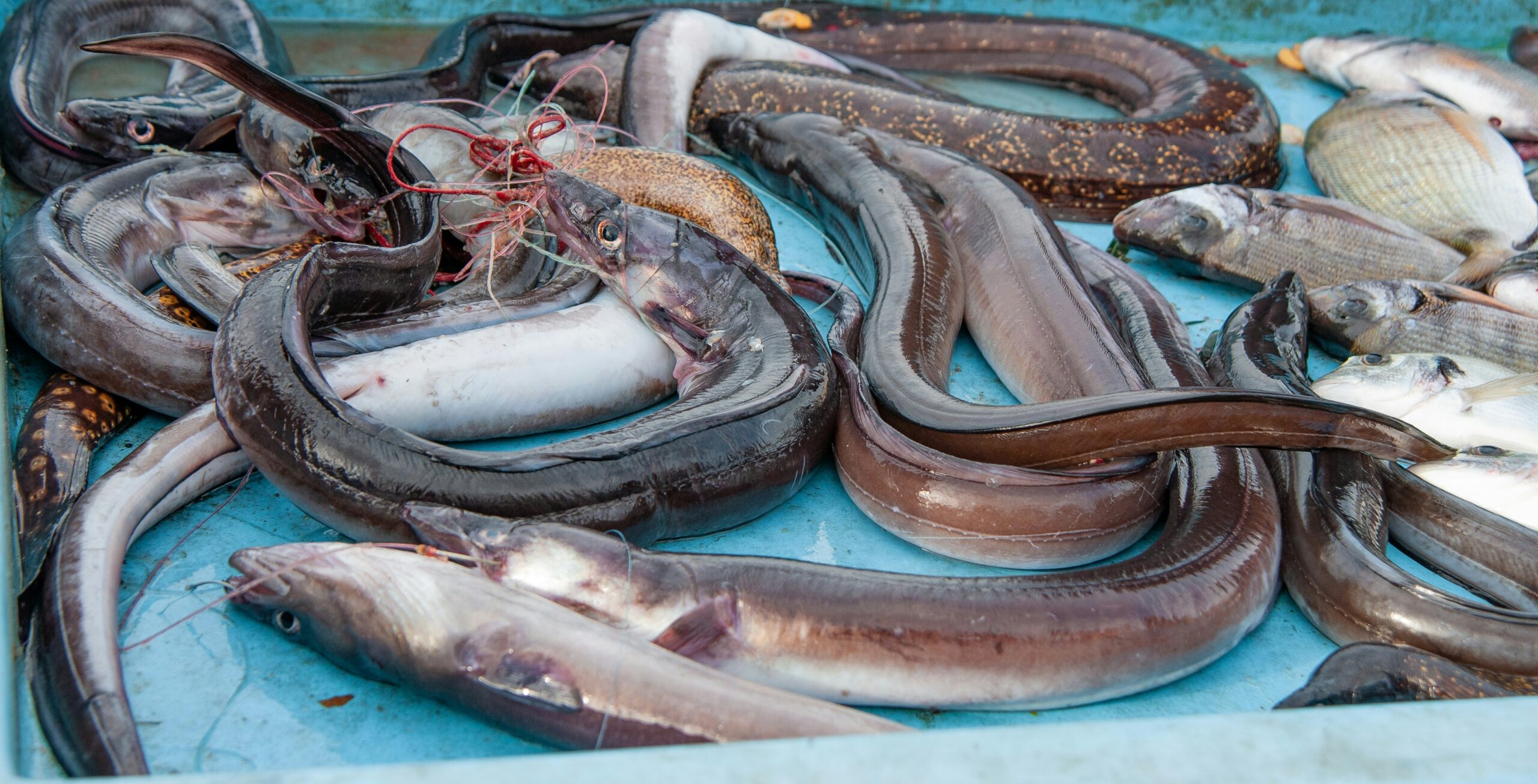New research reveals 99% of globally consumed eels are from threatened species as €2.5bn trafficking industry evades enforcement efforts
Photo by Natalia Gusakova
The illegal trade in European eels has been confirmed as Europe’s biggest wildlife crime, worth approximately €2.5 billion annually, whilst new scientific research reveals that over 99% of freshwater eels consumed worldwide come from three threatened species.
A groundbreaking study published in Scientific Reports in August 2025 by researchers from Chuo University and National Taiwan University analysed 282 eel samples from retail outlets and restaurants across 26 cities in 11 countries, combined with global production and trade statistics. The research found that American eel accounted for 75.3% of global consumption, followed by Japanese eel at 18.0% and European eel at 6.7%. All three species are classified as endangered or critically endangered by the International Union for Conservation of Nature (IUCN).
The European eel population has declined by approximately 90% since the 1980s due to habitat loss, pollution, climate change and trafficking. Despite a European Union export ban implemented in December 2010, sophisticated criminal networks continue to smuggle glass eels – transparent, finger-sized juveniles – from Europe to Asia, where they are farmed and sold globally.
José Antonio Alfaro Moreno, lead of Europol’s anti-eel trafficking operation, stated: “If there is a demand, there will be trafficking.” Europol intelligence estimates that up to 100 tonnes of glass eels, equivalent to approximately 350 million fish, are smuggled annually from Europe to Asia, generating up to €3 billion during peak years.
The latest iteration of Operation LAKE, Europol’s flagship action against glass eel trafficking, ran from October 2024 to June 2025 and involved authorities from 21 countries. The operation resulted in 16,131 inspections across Europe, 26 arrests, and the seizure of 22 tonnes of glass eels. Despite these efforts, trafficking networks continue to evolve and adapt.
Moreno explained that “the new trend is the African route,” with glass eels being flown or ferried into Morocco, Mauritania or Senegal, where they can be “cleaned” into legal exports towards Asia. These transit countries allow traffickers to refresh shipments at lower costs than in Europe. Criminal organisations employ biologists, veterinarians and chemists to keep eel mortality rates at approximately 1% during transport. “It is incredible how good they are at doing their job,” Moreno noted. “It is because it is a lot of money.”
Smuggling methods have evolved significantly. During the COVID-19 pandemic, when airport security relaxed, eels were hidden in suitcases, with individual “mules” carrying up to 50kg spread across three bags. Now, larger profits come from fresh cargo shipments, where eels are packed between mussels or frozen meat, with single shipments concealing up to 500kg of glass eels.
The illegal eel trade extends beyond Europe. More than half of European eel seizures between 2011 and 2018 were destined for China, which accounts for 70% of the world’s total eel exports. Japan remains one of the largest global consumers, with an estimated 73% of eel consumed in Japan being imported in 2024, according to the Japanese Fisheries Agency.
Dr David Baker of Hong Kong University, who developed an eDNA test to identify trafficked eels after authorities intercepted suspicious luggage in 2016, described his discovery: “It hit me like a ton of bricks that a critically endangered species is on the shelf at all these commercial retail outlets.” Baker’s research found that 45% of convenience store eels in Hong Kong were European.
A 2025 TRAFFIC report revealed that in 2023, EU member states recorded nearly 5,200 wildlife seizures involving more than 1 million specimens, with 86% being European eels. Portugal, Spain and France accounted for the bulk of live eel seizures in 2023.
The complexity of the trade extends beyond simple smuggling. Europol describes eel trafficking as involving wildlife smuggling, document fraud, tax evasion and money laundering. A January 2025 study published in Science of The Total Environment found that glass eels rescued from smuggling operations suffer immense physiological stress.
Dr Hiromi Shiraishi of Chuo University emphasised the traceability challenge: “There is no traceability. It is very difficult to determine where these eels originally came from,” even for Japanese importers attempting to source legal eels.
The inability to breed eels successfully in captivity compounds the conservation crisis. All eel aquaculture worldwide depends on capturing wild glass eels, creating constant pressure on natural populations. According to research estimates, Europol’s figure of 100 tonnes of illegally exported eels accounts for approximately 23% of annual European eel recruitment, alongside 7% for legal European demand and an estimated 16% from illegal, unreported and unregulated fishing.
Conservation efforts face significant challenges. Whilst enforcement has ramped up, patchy national regulations within the EU leave room for exploitation. Some legal eel fishers argue that trafficking is not the primary threat, pointing instead to habitat loss from dam projects and wastewater pollution. One estimate suggests eels have lost 70% of their habitat over the past 40 years.
The European eel was listed in Appendix II of the Convention on International Trade in Endangered Species (CITES) in 2007. A 2025 Europol serious and organised crime threat assessment places illegal glass eel trafficking among the most lucrative wildlife crimes globally.
